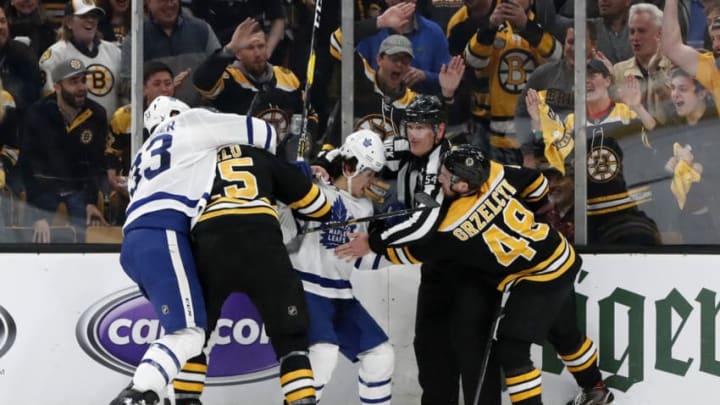Are the Toronto Maple Leafs tough enough?
Toughness and size are two words that have been grossly overused in the past seasons when discussing the Toronto Maple Leafs. Before you click off this article, hear me out, this isn’t your typical skill-first focus.
I’m a Clinical Exercise Physiologist, basically identical to a Kinesiologist in Canada. That means I study and have a massive passion in the development of the human body.
Due to this passion, I get driven mad by the ideology that the inherent physique and traits of an individual athlete are somehow unimprovable. If this were the case, the Toronto Maple Leafs sport science team, and every sport science team for every sporting team in the world, would be completely and utterly redundant.
Since this isn’t the case, as science shows (e.g. Kawhi’s load management, Aussie legend Sam Kerr’s knee, Leeds Utd’s catapult system), we should try keep a much more open mind in terms of what a player ‘is.’
Drafting and Developing
When drafting and developing, it has been long thought that in the later rounds, you should always target the most athletic player and the skill will come.
The Toronto Maple Leafs, as Kyle Dubas alluded to in interviews, moved away from the old philosophy in the past year, and chose a new focus. He placed faith in his development staff to build a hockey player’s body underneath a hockey player’s mind.
This is adverse to the old blueprint because it challenges the old assumption that “you can’t teach skill.” The Leafs believe that if they choose players with the right smarts and mentality, they can craft them into the hockey players they want them to be – including making them tougher and grittier, if need be.
Hockey has a history of being behind the eight-ball when it comes to player development. In a podcast with Matt Nichol, the NHL’s first full-time S&C coach, he was pretty open on this point. I won’t break down the science on it (if you’re interested you can listen here), but basically, he ran tests and found that the energy system most players trained to improve fitness was in fact not the one used primarily during the game.
Even following these findings, players and coaches alike, still used the completely incorrect energy system as a cut-off for players deemed “unfit.”
Further to this point, there’s a tendency to believe “toughness” is an inherent ability in a player that cannot be taught. As if, every great athlete in the world was never able to add an inch of muscle or millisecond of speed.
To this point, many great tough guys in the NHL were actually not considered fighters in junior. Adaptation is the key to both physical growth and the ability to go from a junior hockey player to an NHLer.
The point is, the Toronto Maple Leafs have a phenomenal team of player development coaches.
Trevor St. Agathe, Barb Underhill and Darryl Belfry are some of the best in the business. We have seen first-hand the effect these individuals can have on players and I implore all of you to give this regime time.
Developing tenacity and toughness is something that is attainable but doesn’t happen overnight.
The change in players like Mason Marchment, Pierre Engvall and Trevor Moore over the past season are evidence. The Boston Bruins showed a prototype with their third and fourth lines in the playoffs: lines that can play a skilled game, chip in offensively and play heavy and hard in the opponent’s zone.
The aforementioned Marlies players bring a similar skill-set. Trading half the line-up for big bruising fighters isn’t the answer.
Trust the development process and trust that the years of work each and every member of the development staff put into the craft are not in vein.
